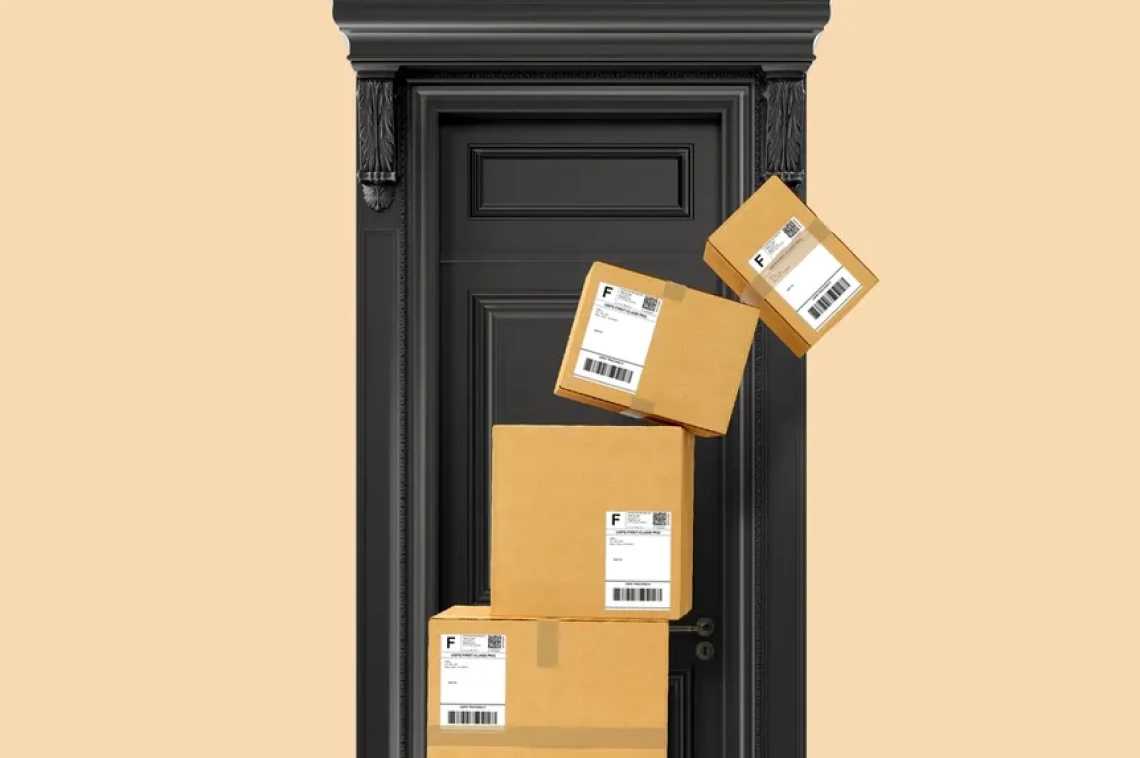Two-day shipping is a solution for a problem that probably doesn’t exist
Bad news: Many retailers can’t match Amazon’s shipping speed. Good news: Many shoppers don’t care.

Two-day shipping has not, however, been good news for everyone, especially businesses that can’t feasibly charge a membership fee or figure out how to absorb the cost.
Photo credit: Francis Scialabba
The era of fast delivery began in 2005, when Amazon founder Jeff Bezos introduced Amazon Prime, which for $79 annually (now $139) enabled members to have unlimited free two-day shipping.
“We expect Amazon Prime to be expensive for Amazon.com in the short term,” Bezos wrote at the time in a letter to customers. “In the long term, we hope to earn even more of your business, which will make it good for us, too.
Very good, as it turns out.
Two-day shipping has not, however, been good news for everyone, especially businesses that can’t feasibly charge a membership fee or figure out how to absorb the cost.
But here’s an alternative to worrying about how to ship speedily: stop worrying. Many shoppers don’t care if the sun sets several times between the time they order a shower curtain and it arrives. And as consumers become more aware of the environmental impact of fast shipping—not to mention all those harried warehouse workers—retailers are reframing slower shipping as a feature, not a flaw.
Slow dance: “Does anyone want or need two-day shipping?” That’s a question Melissa Minkow, director of retail strategy at CI&T, a digital solutions company, told us she’s been asking herself for years.
She’s been asking consumers, too:
· When asked how quickly they expect online orders to arrive, shoppers’ most popular response, at 36%, was three to four days, followed by two days (30%), one day (18%), and the same day (9%), according to a 2021 CI&T survey.
Also—stop us if you’ve heard this one—shoppers who need something right away can go to an actual store:
· Asked for the most likely reason that they’d shop IRL, the most popular reason shoppers cited was that it’s the fastest way to get what they need, with 42%, followed by best prices (19%), CI&T found.
· But asked the most likely reason that they’d shop online, only 14% said it’s the fastest way to get what they need, with the most popular being best prices (37%).
“So is two-day shipping just kind of this expectation developed and pushed by one retailer in particular?” asked Minkow. “Yes, it is…Amazon created this golden standard that consumers were not expecting—or not in need of.”
Breaking the fast: Although they’d been the darlings of VC funders in recent years, this year rapid-delivery startups hit some major speedbumps.
· Joker ended operations in the US to focus on Latin America.
· Gorillas laid off half its staff (300 workers) in May and exited Belgium, Denmark, Italy, and Spain.
· Getir cut 4,800 workers globally; GoPuff laid off more than 400.
Nick Green, co-founder and CEO of Thrive Market, has been in the unenviable position of competing against such food-delivery apps, some of which guarantee delivery in minutes, whereas the Thrive website says most pantry-goods orders arrive in two to four days.
But Green said customers don’t mind because they’re aligned with the environmental values of Thrive, which buys carbon offsets for all its shipping and only ships via ground transportation, which it estimates uses 84% less CO2 than packages that travel by plane.
“A lot of people are kind of throwing up their hands and saying, ‘You know, I don’t want to be contributing to global warming or to climate change in a way that I now recognize I am by focusing just on getting things faster,’” Green told us.
· In a recent survey by Nosto, a commerce experience platform, and Censuswide, more than half (54%) of respondents strongly or somewhat agreed with the statement that they wouldn’t mind slower delivery times if it meant reducing carbon emissions.
At Goodbuy, a browser extension that, when online shoppers are on Amazon or other e-commerce giants, pops up and offers similar products from small businesses, “we have never mandated any sort of shipping speed from our small businesses,” co-founder Cary Fortin told us. “It was really important to us we understand how expensive it is and how environmentally challenging it is for small businesses to do so.”
The free shipping that Goodbuy vendors typically offer, she said, requires enough of a minimum-purchase threshold that it’s viable for a small business, and also cheaper, slower shipping, typically seven to 10 days, she said.
Consumers also are linking faster shipping with accounts of dangerous working conditions at Amazon warehouses.
· 67.4% of regular Amazon users would accept slower delivery timelines if they knew Amazon would improve the working conditions for drivers and warehouse workers, according to a 2021 survey by GammaWire.
Minkow thinks retailers waste effort on fast delivery that would be better spent elsewhere.
“We get so excited about the glitzy, glamorous buzzword ideas,” Minkow said of speedy delivery. “Too often, innovation is happening where consumers could not care less.”

